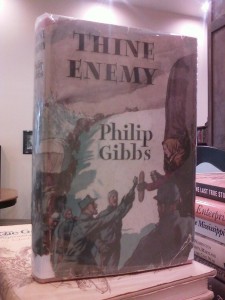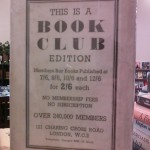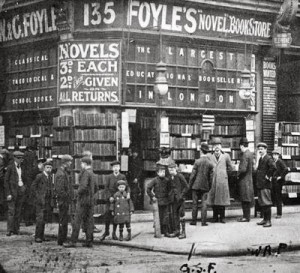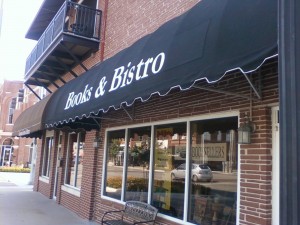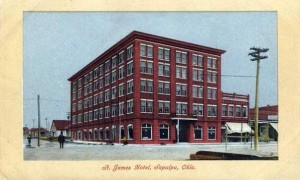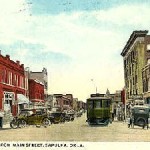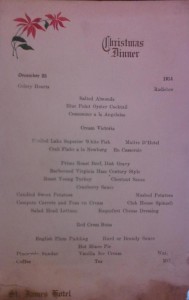You know what they say about Beauty and the Eye of the Beholder. Right. It’s better than a poke with a sharp stick, as Granny O’Herne used to say.
The other thing was, One Man’s Trash is Another Man’s Windstorm Cleanup. She was chock-full of sayings.
They both hold true in the case of an odd book that came in today. On one hand, it is a nondescript little hardback with a simple cloth binding. Old, but not in book-years. As you know, books are the reverse of dogs. That ol’ hound of 10 human-years is said to be 65 or 70 in dog-years. So this book – published some 62 years ago in human years – is really only nine-or-so years of age in book-years. Big Wup.
Here’s the thing, though. As the image of the back of the dustjacket shows, this is a Book Club Edition from London, from a company that claimed in black and white to have nearly a quarter-of-a-million members in its day. But for all those book-club buyers, all these years later, how many do you suppose are still surviving?
Anyone? Anyone?
Nah, you’re wrong. This isn’t the only copy left. Was I implying that?
But it turns out, of all the libraries worldwide, just two copies remain among the holdings – both of them located in Germany (the book is a novel set in Germany, although written in English). Those are First Edition Copies. Of this particular edition – with the dustjacket intact – there are maybe seven copies in the entire world.
Valuable?
Not really. (More than Sarah Palin’s second effort, though. I’ve still got new copies of that one available, if you’re in the market…) It’s that whole Beauty and the Eye thing. Philip Gibbs was a fairly prolific author and this story won no Pulitzers. This copy isn’t as collectible, as a Book Club Edition, even if it came from one of the first book clubs – ever.
You can see in the image (at least, if you click to make it larger) that the address is listed as 121 Charing Cross Road, London. That’s the site of Foyle’s Bookstore, once noted by Guinness World Records as the Biggest Bookstore in the World. (True or not, Foyle’s managed to get certified as such.)
In the UK, teenagers may take a civil service exam to get hired, but brothers William and Gilbert Foyle both failed to score high enough in 1903. To get rid of their textbooks, they took out an ad. They got so many replies that they wound up buying more textbooks to sell, and Foyle’s Bookstore got its start.
They quickly grew to the point they needed larger quarters, and – you guessed it (at least, I’m assuming you did!) – they moved into quarters at 121 Charing Cross Road. They’re still there. Later, in addition to branch locations in London, they had shops in Dublin, Belfast, Cape Town and Johannesburg. In addition to books, they diversified, with a Lecture Agency, an entertainment company, a craft shop, a travel bureau, and publishing house.
That’s where this little copy of THINE ENEMY comes in. It was published by their book club department and shipped out by post to buyers – sometime around 1951. So although it’s only 62 years old (10 in book-years, 403 in dog-years), there just aren’t many remaining.
If I was the grandson or granddaughter of Philip Gibbs, Heck! I’d love to have this little one-owner sitting on my bookshelf. (Disclaimer: Not exactly documented as one-owner, but what the hay?) My Gramps, I’d say proudly, showing it off to my guest.
Guest: Really? He wrote this?
Me: No, but he kept a diary.
Guest: So he mentions buying the book?
Me: Don’t know. The diary has a little lock on it. But that fellow on the dustjacket sort of looks like Gramps.
So you see, a book can be a valuable tie to our ancestry – in this case – if your ancestor happens to be named Gibbs. Philip, specifically. If that’s the case, I’ve got something here you will certainly want to own.
The rest of you can find another treasure to suit – come visit!
McHuston
Booksellers & Irish Bistro
Rose District
122 South Main, BA OK!
Photograph: Chris Ware/Getty Images
